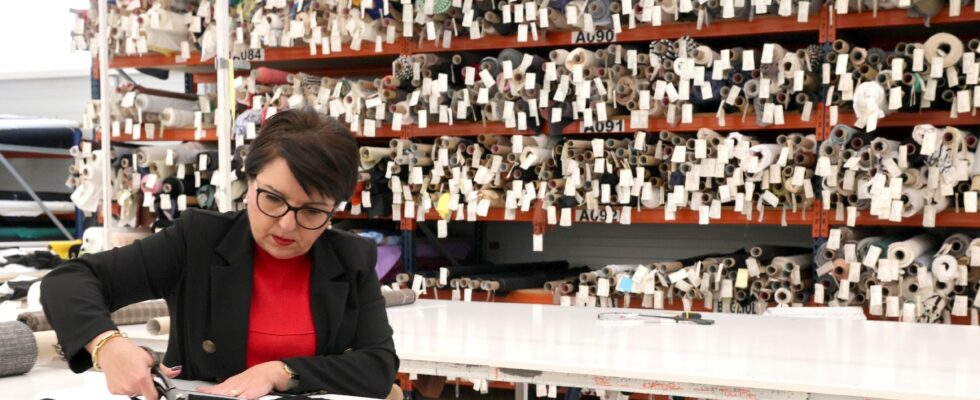Few factories still bear the name of their original village. This is the case of Lenzing, a huge wood pulp and textile fibre manufacturing complex that has been adjacent to the small tourist town of the same name in the Salzburg region of Austria since 1892. Chimneys belching clouds of water vapour, 1,800 tonnes of logs swallowed every day and the equivalent of the electricity consumption of the city of Orléans: the site evokes heavy chemistry more than the glamour of fashion.
However, Lenzing is at the forefront of the manufacture of lyocell, a white fiber, vaporous like cotton candy, and made… with fir or eucalyptus pulp. Transforming cellulose to dress goes back to the 1930s with viscose, which certainly requires wood, but also chemicals – sodium hydroxide, sulfuric acid, carbon disulfide – toxic for biodiversity.
On the contrary, the development of lyocell aims to be more sustainable. “We do indeed use a solvent, methylmorpholine-N-oxide or NMMO,” acknowledges Claire Khoriaty, head of development for France and Belgium at Lenzing. “But in a closed cycle, which allows 99.8% of it to be recovered. As proof, the production has obtained the European Ecolabel certification, which guarantees respect for the environment.”
Lyocell, Lenzing’s “white gold”
The “white gold” of the Lenzing group – 2.5 billion euros in global turnover in 2023 –, marketed to spinning mills under the Tencel brand, “allows brands to reduce their carbon footprint on the fiber by 10% to 15%. In addition, the properties of lyocell are constant, which makes it easier to spin than cotton”, assures Claire Khoriaty.
Accused of emitting 4 billion tons of CO2 equivalent per year – more than air and sea traffic –, vilified for its immoderate use of cotton, a voracious crop in irrigated land, criticized, finally, for its piles of non-recycled waste, fashion is looking for a new virginity. Always in search of more eco-friendly materials, Adidas, Mango, Zara, but also Isabel Marant offer dresses, T-shirts or pants in 100% Tencel, or mixed with cotton and linen. We even find it in certain sneakers at Dolce & Gabbana and Camper.
To attract designers, Lenzing ensures that it grinds PEFC and FSC certified logs, two labels that guarantee sustainable forestry. Finally, Canopy, a Canadian NGO that defends ancient or endangered forests, ranks the group among the most virtuous manufacturers.
An unknown environmental cost
Lyocell, which does not even represent 1% of global fiber production, still dominated by synthetics and cotton, is attracting covetousness. Competition with China and Taiwan, where rival Acegreen operates, is fierce. As is the case with India, where the powerful conglomerate Aditya Birla manufactures aluminum, cement and viscose as well as lyocell. In all cases, the industrial process remains very energy-intensive, requiring large volumes of water and wood, two resources sensitive to global warming.
And if this miracle fabric was only a vast operation of greenwashing ? The Austrian giant defends itself: “Tencel brand fibers are biodegradable in soil, fresh water and the sea.” This self-destruction would take less than two months at a temperature of 28°. Unfortunately, despite its desire for transparency, Lenzing does not make public the data on the life cycle analysis, which would allow the environmental impacts of lyocell to be assessed, from its manufacture to the waste disposal site. However, these elements are essential for calculating the environmental cost of a purchase and indicating it to the consumer.
Still modest volumes
“Rather than cutting down trees, we should reuse more used clothing,” says Delphine Droz, founder of La Belle empreinte and specialist in CSR (corporate social responsibility) in clothing. An idea for the future since Europeans throw away 4 million tons of it every year.
Recycling is exactly what Lenzing is promoting with its Refibra technology, which combines wood with 30% shredded second-hand clothes to obtain lyocell. Even more daring, the Finnish Spinnova uses agricultural residues and even leather to produce fibers using a mechanical process. Unfortunately, the volumes are still far below the needs. Investments are heavy and margins are low. Lenzing spent more than 30 million euros on research and development in 2023, while ready-to-wear sales are experiencing a lull. This is where the gap lies: technical progress is moving at the slow pace of heavy industry, while fast fashion lives – and rages – in a hurry.
.
